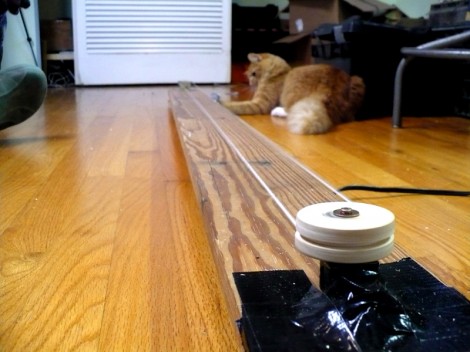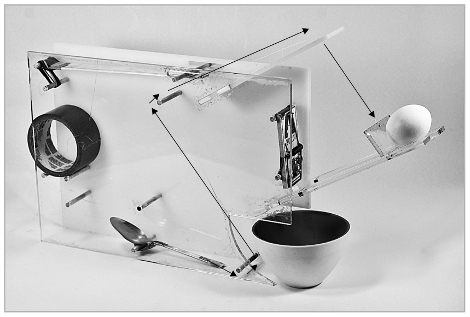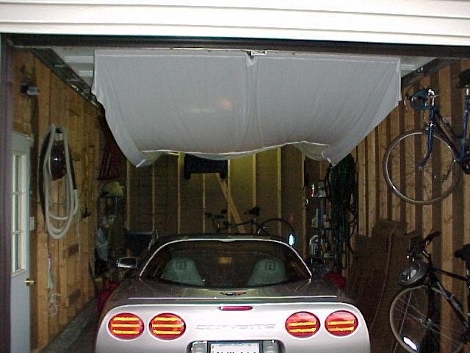
With winter upon us, and all the windows shut, [Garfield] and [Socks] can get a little restless. But [Dino] is determined to keep his furry friends entertained through the cold dark months. He hit the junk box, and used some interesting fabrication techniques to build the Chase-a-Mouse motorized cat toy.
The toy is popular with the cats because it incorporates two traditionally satisfying features; something to chase, and an obstacle to chase it around. The base of the unit is a long plank which is held up from the floor by a couple of inches. The loop of rope which spans the board’s length has a mouse attached to it with about six inches of string. When the motor is flipped on it bounces and jerks its way around the circuit, darting in and out of the space below the base.
As you can see in the video after the break the motor is a bit loud. [Dino] used the sweeper motor from a Roomba for this. It might freak the kitties out at first, but curiosity will get the better of them eventually. It’s a quick build, and we love the drill-turned-lathe that is used make the wooden pulley for the system.
Continue reading “Pep Up Your House Cat’s Boring Wintertime Life”












